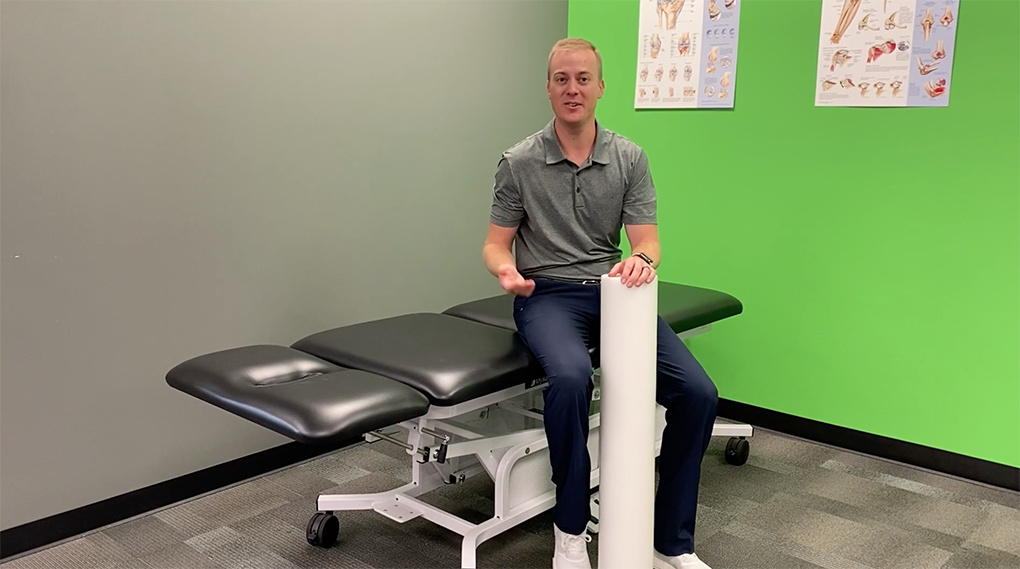Due to a vast increase in employees working from home this year, upper back pain is on the rise due to poor posture and a lack of proper seating options. Working from the couch may have seemed great for a few weeks, but it’s hardly sustainable.
We have two easy exercises for relieving upper back pain and stiffness using a foam roller. If you don’t have a foam roller at home you can roll up a blanket or a few bath towels to get a similar result; it’s not quite as good but it works in a pinch.
1. The Open Book for Upper Back Pain
The first exercise Alex recommends for upper back pain is called the open book. Grab your foam roller and lay on your side on a table, your bed, or the floor; the foam roller should be parallel to your body with the top just above waist level. Elevate your top leg on the foam roller, straighten out your arms in front of you, and relax your head; use a pillow to support your head and neck if needed. Begin the exercise by rotating your upper arm up, over, and away from your body, keeping your arm at chest level. You should feel a stretch in your back, chest, and shoulders. If your arm doesn’t go to the mat or floor that is normal, don’t push it! Hold the position for a moment and then return your arm to the starting position.
As you move your upper arm through the motion, be sure to keep your leg down on the foam roller. Focus on the arc of your arm and rotating your upper back while following your hand with your head. You can complete this movement for a few repetitions and will hopefully elevate some of your upper back pain.
This first exercise works on the rotation of your upper back. The next exercise will work on the extension or the ability to bend backwards.
2. Foam Roller Extensions
Begin the second exercise by sitting on the table, bed, or floor, position your foam roller horizontally so when you lay back it is across your upper back. A great starting point is just below the shoulder blades. Bend both of your knees up, feet flat on the floor to protect your lower back and support your neck with your hands as if doing a sit up. Take a big, deep breath and exhale as you lean back over the roller, letting gravity sink you down over the foam roller. Keep your core tight and do not arch your lower back.
Hold this position for a few seconds. You want to feel the stretch in the upper back before returning to the starting point to repeat the motion again. Don’t force yourself over the roller; rather, relax and let gravity sink you down.
Always make sure you’re supporting your neck at all times and don’t force yourself through any uncomfortable ranges of motion.
Finish four or five repetitions then reposition the roller up or down slightly to hit a different part of the spine.
If these exercises cause pain or discomfort stop immediately and reach out to us for a Complimentary Consultation. We’ll set you up quickly with a physical therapist who can treat your upper back pain.
Check out our other blog posts for more tips and our other knowledgeable providers at Agile Virtual PT. If these exercises don’t bring you the kind of relief you’re looking for, let us know by scheduling an appointment with us. We’ll schedule you with a licensed physical therapist who can develop a specific plan to you.

